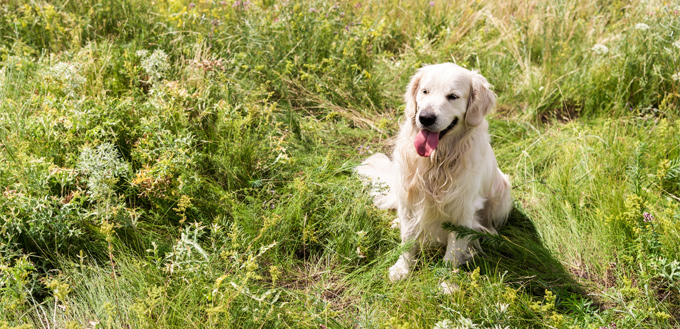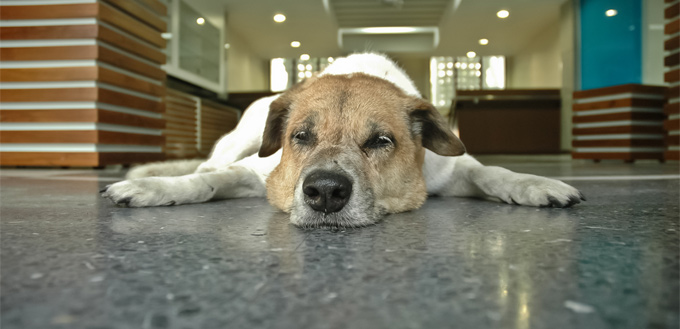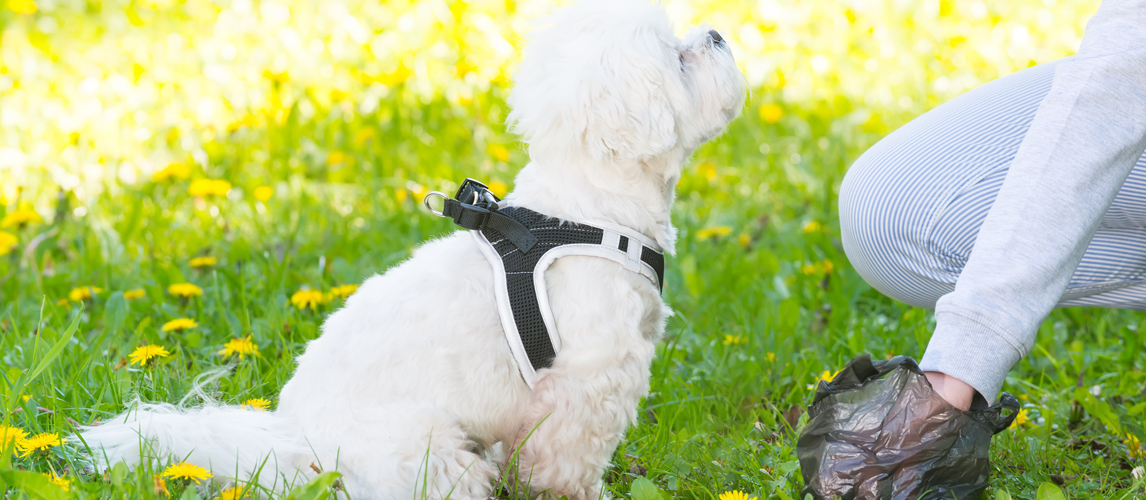One of the most common health conditions that affect almost all dogs and never fail to raise the eyebrows of even the most responsible pet parent is anal gland problems. Very few have the courage to talk about the pair of glands that produce really foul-smelling secretions or why the glands exist in the first place. However, as stinky and unpleasant as the problem may be, pet parents have to start gaining a much deeper understanding of the smelly world of anal gland problems in dogs.
A Look at Anal Glands
Sometimes called anal sacs, anal glands are a pair of small glands that are located on either side of the dog’s anus. If one tries to imagine the dog’s anus as a clock and the portion of the anus near the base of the tail is the 12 o’clock position, one pair of these glands will be located in the 4 o’clock position while another pair is on the 8 o’clock position. You will not be able to see the glands as these are located deep inside the anus between the internal anal sphincter and the external anal sphincter.

Each sac is composed of two types of glands. One is a sebaceous gland that produces sebum or oil while the other is an apocrine gland which produces sweat. Each sac has a short and narrow connecting duct or tube that eventually empties into the dog’s anus. The combination of oil and sweat produced by the two types of glands in the anal sac leads to the production of a brownish, oily liquid that comes with a very strong odor.
The Purpose of the Anal Glands
There are two theories as to the function or purpose of the anal glands. One is for lubricating the anal canal while the other is for scent marking.
As the dog’s feces pass through the internal anal sphincter, it presses on the region where the anal sacs are located. Just like in the manual expression of human breast milk, the passage of firm stools squeezes the anal sacs so that they release the anal sac fluid that has been accumulated inside the sac. Since the liquid contains an oily substance from sebaceous glands, it lubricates the surface of the stool as well as the remaining portion of the dog’s anal canal. This allows it to pass through the external anal sphincter with relative ease.
The second role of the anal glands is related to a distinct behavior in many mammals. The anal glands are also known as scent glands. It is believed that the sebaceous glandular secretions are territorial scent markers that can be expressed by contraction of the internal and external anal sphincters. If this is not possible, then its expression is dependent on the passage of stools from the dog’s rectum and through the anus. This is why dogs usually know where they defecated last because the oily scent left on the ground is still pretty much intact.
What Causes the Problems in Anal Glands?
One has to understand that every time the anal sac is emptied (with the passage of stools or with the reflex expression of its contents) the glands inside the sac have to continue producing the same secretions so that the next time your dog will eliminate, it will have something to lubricate the anus and the stool with.
Unfortunately, if the anal sac liquid is not expressed on a regular basis, there is a tendency for the liquid to thicken. Remember that the glands keep on producing the secretions yet they don’t have anywhere else to go since they are not expressed into the anal canal. This thickens the consistency of the liquid, making it a lot difficult to express. Over time, this can become impacted.
Unfortunately, it doesn’t stop there. Since the sac is not being emptied of its now-thickened contents, it can irritate the inner lining and lead to inflammation. This increases the risk of infection since the anus is not necessarily the most sterile or cleanest part of the dog’s body. If the infection goes unchecked, the anal gland can produce an abscess that is filled with pus. This can push through the surrounding tissues and rupture the dog’s anal surface.
There are a number of risk factors that have been implicated in the occurrence of anal gland problems in dogs. It is estimated that 3 of 25 dogs will have the condition at any point in their lives.

One risk factor is a less-than-formed stool. Since the expression of the liquid inside the anal sac is crucial to the prevention of its accumulation and thickening, if the stool passing through the dog’s anus has a softer consistency there is essentially no force to push the liquid through the ducts and into the anal canal. If the dog has chronic soft or watery stools, the risk of having anal gland problems increases.
Obese dogs are also more prone to having anal gland problems than leaner hounds. It is thought that the presence of excess body fat in the dog’s anal region can affect the passage of stool through the anus. Since there is an extra layer of tissue padding that effectively increases the distance between the inner surface of the anal canal and the location of the anal sac, passing stools will not be able to fully compress the anal sacs.
While all dogs can have anal gland problems, it is observed that toy and small dog breeds are more susceptible to such problems than larger breeds. Miniature Poodles, Lhasa Apsos, and Chihuahuas are especially vulnerable. Unfortunately, no one knows why.
How Do I Know My Dog has Anal Gland Problems?
It is relatively easy to check whether your dog has anal gland problems or not. Generally, you will see your dog with a very distinct scooting behavior, dragging its bottom against the floor or the ground in a seeming effort to get rid of something sticking in its butt. You may also see your dog biting or even licking its behind. You can also see it having difficulty trying to move its bowels. It may yelp or cry out in pain because the stool is not getting enough lubrication to pass it through the small opening of the anus. Lastly, you’ll definitely smell that characteristic bad odor that everyone talks about.
What Can I Do?
Most dog groomers strongly recommend the regular expression of the anal sac contents of dogs. This is to allow the glands inside to keep on producing their secretions while also facilitating the cleaning of the ducts. The manual expression of the anal sac contents is often performed as part of the dog grooming process, but only upon the request of the dog owner.
However, veterinarians do not agree with such a practice, saying that the dog has its own way of expressing such anal secretions. The only time manual emptying is recommended is when there is the presence of an anal gland problem. As long as there is no blockage or impaction in the anal sacs and ducts, no one should interfere with the dog’s normal physiology.
The point here, therefore, is in making sure that your dog will be able to frequently express the anal sac contents.
Since chronic soft stools are one of the risk factors for anal gland problems in dogs, it is imperative that you give your dog high-quality food that will not form watery stools. Ideally, the dog food should contain enough fiber to help increase the bulk of fecal matter, making it more solid as it passes through the anus.
You May Also Like: High Fiber Dog Food
Feeding your dog a raw diet that has a higher proportion of bone content such as turkey necks or even chicken backs can also help push against the tissue covering the anal glands. Probiotic and prebiotic supplementation can also help in making the stool of the dog firmer or more solid.
Related Post: Best Probiotics for Dogs
Putting your pet on a weight management program can also help facilitate the normal expression of anal sac contents. This means you need to watch the number of calories that it is eating. You may want to use special food bowls that help you control portion sizes. Additionally, it is imperative that you exercise your pet every day. Physical exercises can strengthen the muscles of the dog’s abdomen and rectum. This helps make it a lot easier for even soft stool to put pressure on the anal sacs.
Lastly, make sure that your dog doesn’t have any allergies. Food sensitivities and allergies have been implicated in the development of anal gland problems in dogs. As such, you have to be very selective of the dog food you give to your pet by making sure that they do not contain the usual suspects in food allergies in dogs. It is often wise to execute an elimination diet to identify the food allergen.
Anal gland problems are quite common among dogs. However, making sure you give your pet the correct diet, giving it plenty of exercise, and managing its food sensitivities can help address this smelly issue even before it occurs.
Sources:
- Marc Abraham, Anal Gland Impaction, The Kennel Club
- T. J. Dunn, DVM, Anal Gland Problems in Dogs, PetMD
- Amy Flowers, DVM, Anal Sac Disease in Dogs, WebMD
Note: The advice provided in this post is intended for informational purposes and does not constitute medical advice regarding pets. For an accurate diagnosis of your pet's condition, please make an appointment with your vet.






